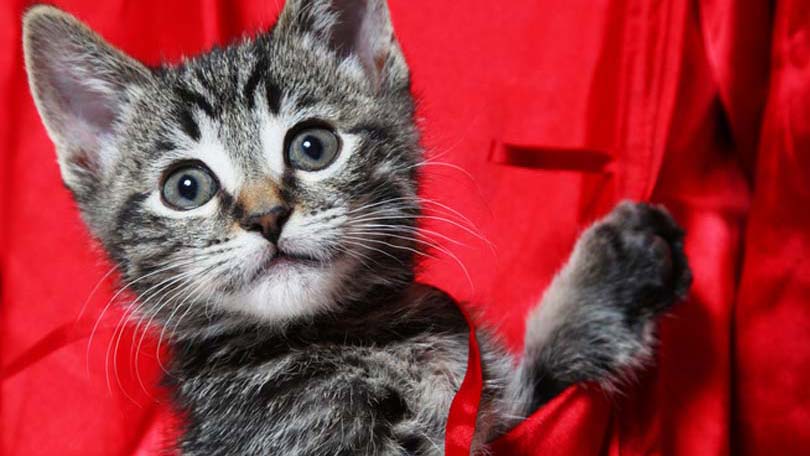
The use of vaccines in cats has provided an essential first defense in the prevention of an array of disease. Until recently, there was a standard set of vaccines given to all cats, first as kittens, and then annually for life. Recent studies and experience has shown that not all vaccines are created equal- and that for some cats, the risks can outweigh the benefits of vaccination.
Vaccinating your cat is one of the most important steps you can take to prevent disease and illness throughout their life. Although several major veterinary associations have developed vaccine and administration recommendations for cats, there is currently no one, universally accepted protocol for the proper vaccination of cats. As such, it is often up to the veterinarian and the cat owner to determine the best protocol for their individual cats needs.
Vaccines fall into two groups- core’ vaccines are those that are recommended to be given to most cats, and include Feline Rhinotracheitis, Calici, and Panleukopenia and Rabies. Non-core, or ancillary vaccines, are those which should be given to only some cats, depending on their risk factors and health status. These include the vaccines for Feline Leukemia, and Feline Immunodeficiency Virus.
Feline Rhinotracheitis and Calicivirus are two upper respiratory diseases in cats caused by the herpesvirus and calicivirus, respectively. Both are highly contagious between cats, and can be transmitted through nose-to-nose contact, or by sharing bowls. Although these viruses do not tend to cause serious illness in most cats, they can be deadly in kittens, and in some cases can become chronic. Infected cats sneeze excessively, have a runny nose and often eye discharge. Cats that develop the chronic form of the disease will also continue to shed the virus throughout their life, continually able to infect cats they come into contact with. Although vaccinating for these viruses is a complete prevention, and vaccinated cats may still contract the virus, their illness will be less severe and they will recovery quicker than unvaccinated cats. Vaccination should be started at 6-8 weeks of age, continuing every 3-4 weeks until the cat is 16 weeks old, then boostered in one year. After that time, vaccination should be given once every three years. The vaccine against Feline Rhinotracheitis and Calicivirus is usually combined with the vaccine for Feline Panleukopenia, in the form of the FVRCP vaccine.
Feline Panleukopenia is also known as feline distemper, and is caused by the Parvovirus. A highly infectious disease, Panleukopenia is especially of concern in shelters and boarding facilities, where it can remain active in the environment for months to years. Panleukopenia is especially dangerous in kittens, and can cause fever, vomiting, diarrhea, and death. The vaccine for Panleukopenia is generally included in the vaccine for Rhinotracheitis and Calici, and given at the same time as that vaccine.
Rabies is a disease that can infect any mammal, but cats are particularly at risk because of their propensity to hunt small animals that frequently harbor the infection, such as mice, rats and possums. Once infected with Rabies, the disease is always fatal. Because of the seriousness of this disease, it is recommended (and in some states, required) that all cats be vaccinated for rabies, regardless of whether they are indoor only or outdoor cats. The rabies vaccine should be first administered to kittens at 16 weeks, then boostered one year later. After that time, a booster vaccination every three years is recommended for optimum protection.
Your veterinarian may recommend a cat vaccine for the Feline Leukemia Virus if it is determined that your cat is at risk for Feline Leukemia (FeLV). FeLV is a retrovirus, which attacks the immune system of affected cats, and causes an array of secondary diseases including respiratory infections, weigh loss, lethargy, anemia, cancer and death. FeLV is extremely contagious, and can be transmitted by saliva and nasal discharge, as well as from an infected mother cat to her kittens. Cats must be tested for FeLV (a simple blood test) prior to vaccination, to ensure they are not already carriers for the disease. Vaccination for FeLV can have side effects, the most serious of which is a vaccine associated sarcoma, or cancerous mass, than can form at the injection site. For this reason, it is recommended that the vaccine not be given to indoor-only cats who are negative for FeLV, and do have an opportunity to come into contact with infected cats. In outdoor cats, the risk of contracting FeLV is a far greater threat to their health than a potential vaccine reaction, and the vaccine is thus recommended. Kittens should receive their first vaccination at 12-16 weeks of age, repeated once 3-4 weeks later, and then given every year thereafter.
Other vaccinations your vet may recommend for your cat include a vaccination for Feline Immunodeficiency Virus (FIV, a form of feline AIDS), the Giardia vaccine (a intestinal parasite), and the Chlamydiosis vaccine (an respiratory infection).
The benefit of vaccines should always be weighed against the risk of potential side effects. Vaccine reactions can occur in any cat, and can be as mild as transient pain at the injection site or lethargy. In severe cases, vaccine reactions can cause vomiting, diarrhea, facial swelling and even severe shock. These reactions can be life threatening, and a veterinarian must see the cat immediately. If your cat has a reaction to a particular vaccine, your veterinarian may choose to not give that vaccine in the future, or if possible, administer an alternative form of the vaccine under medical observation to ensure another reaction does not occur.
The most severe form of vaccine reaction is in the form of a vaccine associated sarcoma. These cancers start at the injection site, and can spread into surrounding tissue, muscle and bone. Although a potential side effect of any vaccination, it is most commonly seen as a result of the FeLV and Rabies vaccines. Due to the potential severity of vaccine sarcomas (sometimes necessitating surgical removal, radiation or chemotherapy), these vaccines are administered in the lower hind legs of the cat, to facilitate tumor removal if it becomes necessary. Vaccine sarcomas are a rare, but possible side effect to vaccines, however in most cases, the risk of contracting disease is much greater than the risk of developing a vaccine sarcoma or other potential side effects.
Your veterinarian will be able to help tailor a protocol for cat vaccines that will meet the needs of your cat, while ensuring that the risks are minimized, and ensuring a long and healthy life for your feline friend.
Vaccine reactions can occur and range in severity. Mild general lethargy and injection site soreness are not uncommon. Immediate vaccine induced allergic reactions can also occur. With these types of reactions the animal can have vomiting, diarrhea, facial swelling, and other signs of shock and must be treated immediately by a veterinarian. Although vaccine reactions are frightening to the owner, other than the vaccine-induced sarcomas, they are rarely serious or life threatening. In almost all instances, the benefit of vaccination far outweighs the risk of any vaccine reaction.





